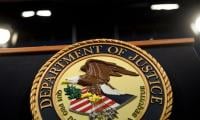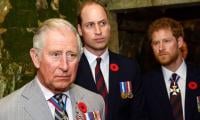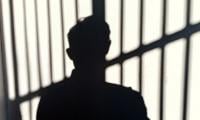The Mumbai case
Post-Mumbai, ten years back, was a period of fertile imagination. Numerous hypotheses emerged but to this region’s great fortune Pakistan accepted very early in the terror cycle that most of the ten young men who had wreaked havoc in Mumbai on that tragic afternoon of 26/11, belonged to Pakistan. Some could even be traced back to their ancestral abodes.
Ajmal Kasab, the lone gunman captured alive and then tried for two years before being executed in India, was found to belong to a poor family of Faridkot, Okara. How he ended up in India, however, has remained a matter of uneasy conjecture.
Early in the investigation process it was confirmed that at least eight, if not all the perpetrators of the murderous 86-hour siege of Mumbai, may have travelled in a fishing boat to the Indian territorial waters where they hijacked an Indian boat and eased into Mumbai under Indian colours. An engine-maker was traced to have sold an engine for the boat which was fixed by the group to sail out of Karachi. It left a question though: if eight travelled on the boat, where did the other two make their way out of? There were questions raised on Kasab, and the Indian reluctance to permit access to him only deepened his mysterious role. He was the lone survivor and a most precious witness to the entire episode.
More on this later; but here-on the leads got cold, both in India and Pakistan, since the two could not move together to a common end of bringing all responsible to justice. In all probability, each sought a different end. A request by Pakistan to conduct a joint inquiry through a judicial commission was repeatedly spurned by India although judicial officers from both sides were permitted to make reciprocal visits to view relevant records. But that is where it all ended. Access to material witnesses was refused and then tied to reciprocal arrangement. This never came. The event came at a moment when the two governments were engaged in finding newer pathways to a constructive relationship, flummoxing all. The drama was played out live for over 80 hours on television screens across the world. Someone had thought through its implications on the tinderbox environment of South Asia adding to the complexities. But we must move on.
A David Headley was discovered, making rounds of Mumbai from the US as he also travelled to Pakistan sporadically. A Pakistani-origin American, now fully naturalised as second generation, he was found reconnoitering all that was to ultimately become the target list and the routes taken by the group to reach those targets. Who was he serving? That has never been learnt. He became an object of interest for the intelligence agencies of the US, Pakistan and India but his trial and post-event debriefing all took place in the US by the American authorities. Both Pakistan and India were denied access to him; India was only permitted to view his testimony, or parts of it. What else he was doing, no one knows.
Similarly, there was a tale of the two Ansari Brothers belonging to Mumbai who were found in the course of the investigation to have had an intimate link to the attackers. Seemingly, they hosted the group when in Mumbai and showed them landmarks of interest. The two were apprehended amidst huge media publicity as agents of Pakistan and abettors of the crime. The legal process initiated against them was soon suspended midway for undeclared reasons following which they were promptly released. Soon they dropped out of everyone’s radar. The Pakistani legal teams could only visit India to gather evidence after three years of persistent requests. While in India, they were refused access to the famed brothers. Who were they? What was their role? Why has India chosen to shelve any mention of them? No one knows.
Hemant Karkare was an eminent police officer of Mumbai who led the operation against the terrorists as it played out live before millions across the globe. He seemed bold and efficient and led from the front. He had also in those days determined that the Samjhota Express tragedy in India in which more than 60 Muslim pilgrims from Pakistan had been burnt alive was the work of some venomous RSS leaders including an active-service colonel of the Indian army. Karkare was killed in the Mumbai operation apparently by shots fired by the terrorists defying the relatively sanitised space predominantly occupied by Indian forces. The Samjhota perpetrators have all been freed over time and the trial closed, Karkare’s findings and potential evidence notwithstanding.
It was suggested that Kasab had entered India from Nepal. Had he? Who facilitated such an entry and where was he housed for the period, which by some counts was over months. Despite being the sole surviving witness of the entire episode he would never be made available to Pakistan as evidence against those under trial on Indian recommendations. He was subsequently hanged to death burying all evidence linked to the episode. What is left is only circumstantial, assertive and pejorative. The trial in Pakistan against the Lakhvi-Seven, members of the proscribed LeT reported by India to have connections to the group, remains suspended.
Hafiz Saeed, the former head of the proscribed LeT was apprehended and arrested, three times, but never beyond the point where admissible evidence could be brought before the courts of his direct involvement in the Mumbai massacre. Either India didn’t have any beyond speculation, or it wouldn’t share any. Instead, India went to town over Pakistan’s sheltering of him and lack of readiness to bring him to justice as the principal accused. In the backdrop of global sensitivity to terrorism, India used the moment to paint Pakistan poorly while looking to win brownie points as a victim. With the trial open, thanks to Indian recalcitrance, the country enjoyed the freedom to invoke dualism in Pakistan’s inability to close the trial. With the scene of occurrence and most evidence in one country, the perpetrators allegedly belonging to another, and key enabling evidence in the third, only a wholesome and readily cooperative approach could have served the cause of justice. None took that route.
Hence, after all the years of allegations and counter-allegations, and stuttering legal processes, Salman Khurshid, India’s then foreign minister, had to declare that the Pakistani state had no hand in the Mumbai incident. President Obama, on a visit to India publicly absolved the state of Pakistan from any wrongdoing. As a consequence, for some years now the Mumbai incident had been lost to the haze of time, dropping off the list of issues which continue to plague Indo-Pak relations. That is, till Pakistan’s three-time former prime minister, Nawaz Sharif, chose to resurrect Mumbai to paint his state and its army and the intelligence in criminal indictment of it. Why he chose the moment and the event which was all but forgotten is better gleaned from the statement of the National Security Committee on NS’ outburst: it “unanimously termed (his) statement…misleading”, and rejected the ‘opinion’ basing it on ‘grievance’. NS’ misfortunes may be many but to trade those for piling ignominy on his country is surely not the stuff leaders are made of.
Email: shhzdchdhry@yahoo.com
-
 Jennifer Lawrence Reveals ONE Rule That Keeps Cooke Maroney Marrriage Alive
Jennifer Lawrence Reveals ONE Rule That Keeps Cooke Maroney Marrriage Alive -
 Who Changed George Clooney's Mind On Marriage?
Who Changed George Clooney's Mind On Marriage? -
 Beckham Family 'feud' Damaging Piers Morgan's Mental Health
Beckham Family 'feud' Damaging Piers Morgan's Mental Health -
 Prince Harry Turns Into A Huge Risk For King Charles As The Optics Spot His Threat
Prince Harry Turns Into A Huge Risk For King Charles As The Optics Spot His Threat -
 Zoe Saldana Overtakes Scarlett Johansson To Become Highest Grossing Actor Of All Time
Zoe Saldana Overtakes Scarlett Johansson To Become Highest Grossing Actor Of All Time -
 Former Congressional Employee Sold Stolen Government Phones For $150k
Former Congressional Employee Sold Stolen Government Phones For $150k -
 Joe Keery Credits Friends For Rare Experience
Joe Keery Credits Friends For Rare Experience -
 Jackson White Teases Darker Turn For Stephen In 'Tell Me Lies' Season 3
Jackson White Teases Darker Turn For Stephen In 'Tell Me Lies' Season 3 -
 Chris Hemsworth Leans On Matt Damon Amid His Shaky Marriage To Elsa Pataky?
Chris Hemsworth Leans On Matt Damon Amid His Shaky Marriage To Elsa Pataky? -
 Friends Of Prince William 'aghast' As King Charles Offers Olive Branch To Harry, Meghan Markle
Friends Of Prince William 'aghast' As King Charles Offers Olive Branch To Harry, Meghan Markle -
 What Cancer Does Colleen Hoover Have?
What Cancer Does Colleen Hoover Have? -
 Zayn Malik Drops Special Surprise For Fans On His 33rd Birthday
Zayn Malik Drops Special Surprise For Fans On His 33rd Birthday -
 Nicola Peltz Sends Harsh Message To Beckhams With Brooklyn Comments
Nicola Peltz Sends Harsh Message To Beckhams With Brooklyn Comments -
 Apple Martin 'lashes' Out At Mom Gwyneth Paltrow For Pushing Her 'too Hard'
Apple Martin 'lashes' Out At Mom Gwyneth Paltrow For Pushing Her 'too Hard' -
 Meghan Markle Going To 'humiliate' Prince Harry With UK Trip
Meghan Markle Going To 'humiliate' Prince Harry With UK Trip -
 Pastor Jailed After Secretly Filming Woman In Store
Pastor Jailed After Secretly Filming Woman In Store



